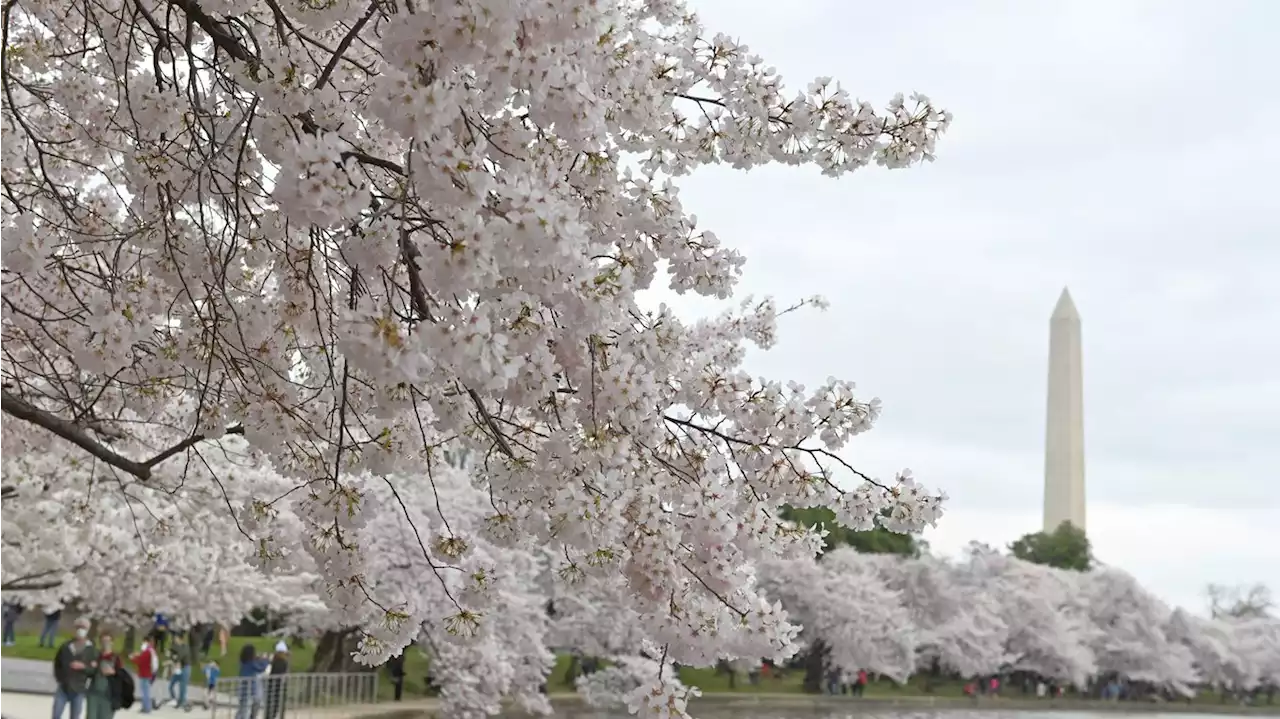D.C.'s beloved cherry blossoms are blooming earlier and more unexpectedly as climate change makes the weather more unpredictable.
United States Latest News, United States Headlines
Similar News:You can also read news stories similar to this one that we have collected from other news sources.
 Holocene climate and oceanography of the coastal Western United States and California Current SystemAbstract. Examination of climatic and oceanographic changes through the Holocene (11.75 ka–present) allows for an improved understanding and contextualization of modern climate change. Climate records of the Holocene can be utilized as a “baseline” from which to compare modern climate and can also provide insights into how environments experience and recover from change. However, individual studies on Holocene climate in the literature tend to focus on a distinct geographic location, a specific proxy record, or a certain aspect of climate (e.g., upwelling or precipitation), resulting in localized, record-specific trends rather than a comprehensive view of climate variability through the Holocene. Here we synthesize the major oceanographic and terrestrial changes that have occurred in the Western United States (bounded by 30 to 52∘ N and 115 to 130∘ W) through the most recent 11.75 kyr and explore the impacts of these changes on marine and terrestrial ecosystems. We present a novel spatiotemporal analysis of Holocene marine and terrestrial temperature, hydroclimate, and fire activity across the Early, Middle, and Late Holocene using a coded analysis of over 40 published studies. Following coded analysis of temperature, hydroclimate, and fire activity in the paper, we include a broader literature review of environmental change through the Holocene, including an examination of the impacts of multi-millennial climate trends on ecological communities. We find that the Early Holocene is characterized by warming relative to pre-Holocene conditions, including warm sea surface conditions, a warm and dry Pacific Northwest, a warm and wet Southwest, and overall spatial and temporal stability. In the Middle Holocene, these patterns reverse; this interval is characterized by cool sea surface temperatures, a cool and wet Pacific Northwest and warm and dry Southwest. The Late Holocene is the most variable interval, both spatially and temporally, and a novel spatial trend appears i
Holocene climate and oceanography of the coastal Western United States and California Current SystemAbstract. Examination of climatic and oceanographic changes through the Holocene (11.75 ka–present) allows for an improved understanding and contextualization of modern climate change. Climate records of the Holocene can be utilized as a “baseline” from which to compare modern climate and can also provide insights into how environments experience and recover from change. However, individual studies on Holocene climate in the literature tend to focus on a distinct geographic location, a specific proxy record, or a certain aspect of climate (e.g., upwelling or precipitation), resulting in localized, record-specific trends rather than a comprehensive view of climate variability through the Holocene. Here we synthesize the major oceanographic and terrestrial changes that have occurred in the Western United States (bounded by 30 to 52∘ N and 115 to 130∘ W) through the most recent 11.75 kyr and explore the impacts of these changes on marine and terrestrial ecosystems. We present a novel spatiotemporal analysis of Holocene marine and terrestrial temperature, hydroclimate, and fire activity across the Early, Middle, and Late Holocene using a coded analysis of over 40 published studies. Following coded analysis of temperature, hydroclimate, and fire activity in the paper, we include a broader literature review of environmental change through the Holocene, including an examination of the impacts of multi-millennial climate trends on ecological communities. We find that the Early Holocene is characterized by warming relative to pre-Holocene conditions, including warm sea surface conditions, a warm and dry Pacific Northwest, a warm and wet Southwest, and overall spatial and temporal stability. In the Middle Holocene, these patterns reverse; this interval is characterized by cool sea surface temperatures, a cool and wet Pacific Northwest and warm and dry Southwest. The Late Holocene is the most variable interval, both spatially and temporally, and a novel spatial trend appears i
Read more »
 Pipeline debate at center of California carbon capture plansTwenty years into climate change efforts, California is now relying heavily on a controversial technology — capturing climate pollution from industry and piping it underground, where it's supposed to remain permanently.
Pipeline debate at center of California carbon capture plansTwenty years into climate change efforts, California is now relying heavily on a controversial technology — capturing climate pollution from industry and piping it underground, where it's supposed to remain permanently.
Read more »
 Federal disaster aid program being overhauled to include climate adaptationEmergency Preparedness Minister Bill Blair said the government can’t keep sending out billions of dollars to help rebuild after a disaster without trying to prevent the same damage from happening the next time. cdnpoli climatechange
Federal disaster aid program being overhauled to include climate adaptationEmergency Preparedness Minister Bill Blair said the government can’t keep sending out billions of dollars to help rebuild after a disaster without trying to prevent the same damage from happening the next time. cdnpoli climatechange
Read more »
 Opinion: The deadly costs for Mexico's Indigenous communities fighting climate changeIndigenous people are being targeted for resisting development projects. Mexico is now the most dangerous place for environmental activists like them.
Opinion: The deadly costs for Mexico's Indigenous communities fighting climate changeIndigenous people are being targeted for resisting development projects. Mexico is now the most dangerous place for environmental activists like them.
Read more »
 We Face a Climate Abyss, But There Are Sparks of Hope, Robert Pollin SaysWe must embrace the positive developments so that we can build effectively from them, the progressive economist argues.
We Face a Climate Abyss, But There Are Sparks of Hope, Robert Pollin SaysWe must embrace the positive developments so that we can build effectively from them, the progressive economist argues.
Read more »
Tomlinson: World will always need oil and gas, but how much?Climate change fight will reduce the need for oil and natural gas but not eliminate it.
Read more »
